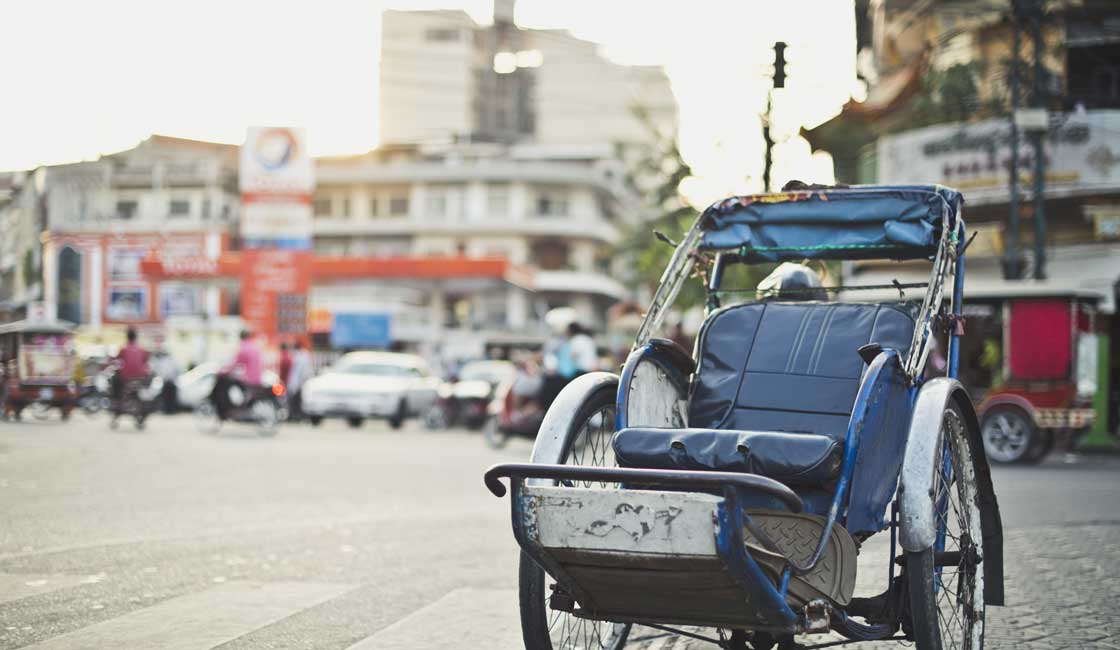
Cambodia’s capital is full of life, color, and energy. It’s hard to believe that less than 40 years ago heinous crimes against humanity were committed in this very city. A ruthless regime was inflicted upon Phnom Penh when it was taken over by the Khmer Rouge and its leader Pol Pot in 1975, and it wasn’t until 1979 when the reign of terror finally ended. The Cambodian capital began to grow again, given a new lease of life thanks to foreign aid.
Today Phnom Penh is a patchwork of French colonial architecture, traditional Angkorian design, and New Khmer constructions, mixed with the odd high-rise block. There is a constant buzz of movement; streets crawl with a medley of mopeds, rickshaws, and pedestrians; and roadside markets, shops, and eateries spill out onto narrow walkways. A dynamic city still recovering from a turbulent past, Phnom Penh is now a major tourist destination in Cambodia.
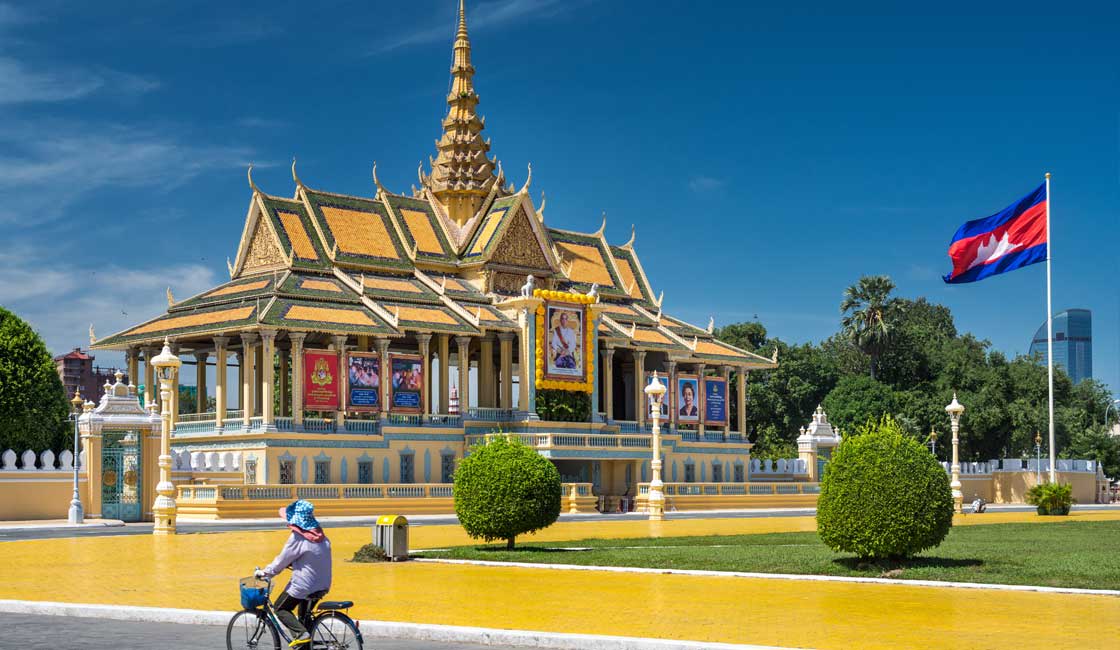
Royal Palace – the main landmark in Phnom Penh
A glimpse into Cambodian riches, the Royal Palace is beautifully preserved. Visitors can see the throne room where ceremonies and meetings take place and wander the manicured grounds. Within the site is the Silver Pagoda, a temple named after its silver-tiled floor which can be observed beneath a protective carpet. Inside you’ll find many Buddha statues made of precious materials.
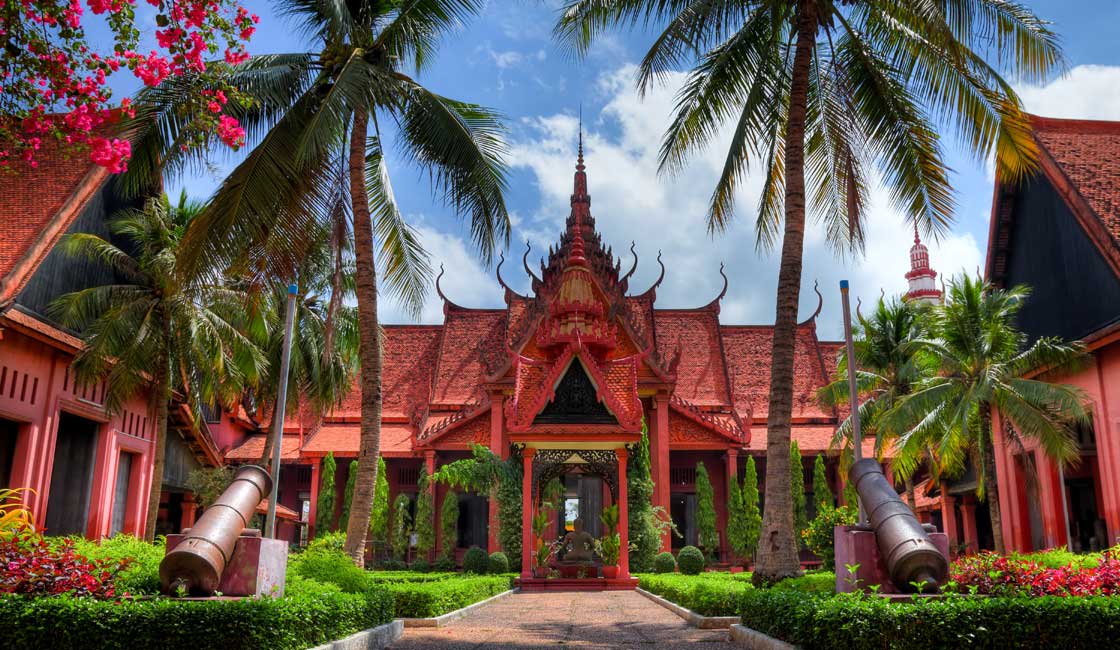
National Museum is right next to the Palace
The National Museum houses an expansive collection of Khmer artifacts, most pieces dating back to the Khmer Empire. In fact, some are treasures that once sat in Angkor’s temples. A visit to the National Museum gives a good overview of Cambodian art, history, and culture, and the museum itself is striking: a burnt red Khmer construction, eye-catching against the immaculate and tranquil green gardens.
Head back in the evening to the site’s theatre for a traditional dance show with a difference. Cambodian Living Arts is a forward-thinking NGO which works to save and rebuild Cambodia’s cultural scene. Following the Khmer Rouge period – which wiped out one quarter of the country’s population – Cambodia’s arts culture was in danger of disappearing. Founded by a Khmer Rouge survivor, Cambodian Living Arts helps surviving artists to educate and inspire younger generations. Support this innovative NGO by attending one of their performances where you will see dancers in exquisite costumes and enjoy traditional stories. You can even take a tour of the art classes themselves.
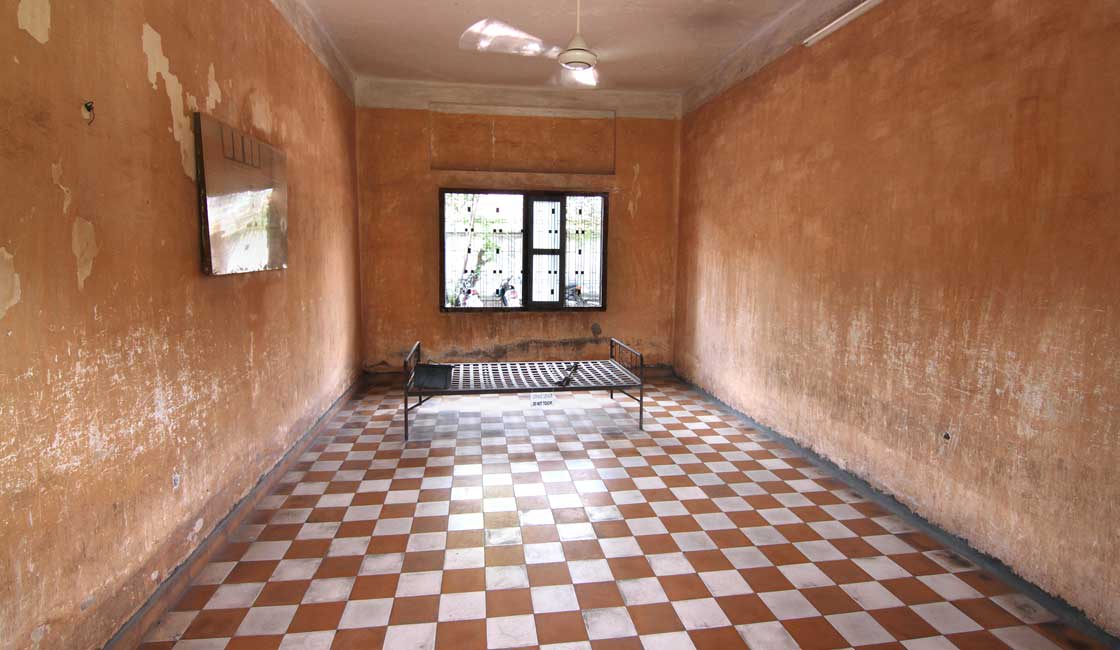
S-21 visit is never easy
The Tuol Sleng Genocide Museum is a testament to the years of suffering and monstrosities which occurred during the Khmer Rouge regime. A former school was used as a prison (known as S-21) to hold and torture victims before they were taken to their deaths at Choeung Ek.
This museum tells the story of the thousands of victims who were bound within its walls. Take your time to pass through the empty chambers, some displaying torture devices and disturbing photos. A tour guide can accompany you and provide unique and personal insights. The last known survivors of the Khmer Rouge regime are at the museum every day.
A haunting memorial site to the lives lost at the merciless hands of the Khmer Rouge, Choeung Ek Genocidal Center (or The Killing Fields) is a powerful reminder of the dark side of mankind. The ground is strewn with remains of human bones and rags of clothing, and a tower of skulls sits at the site’s center.
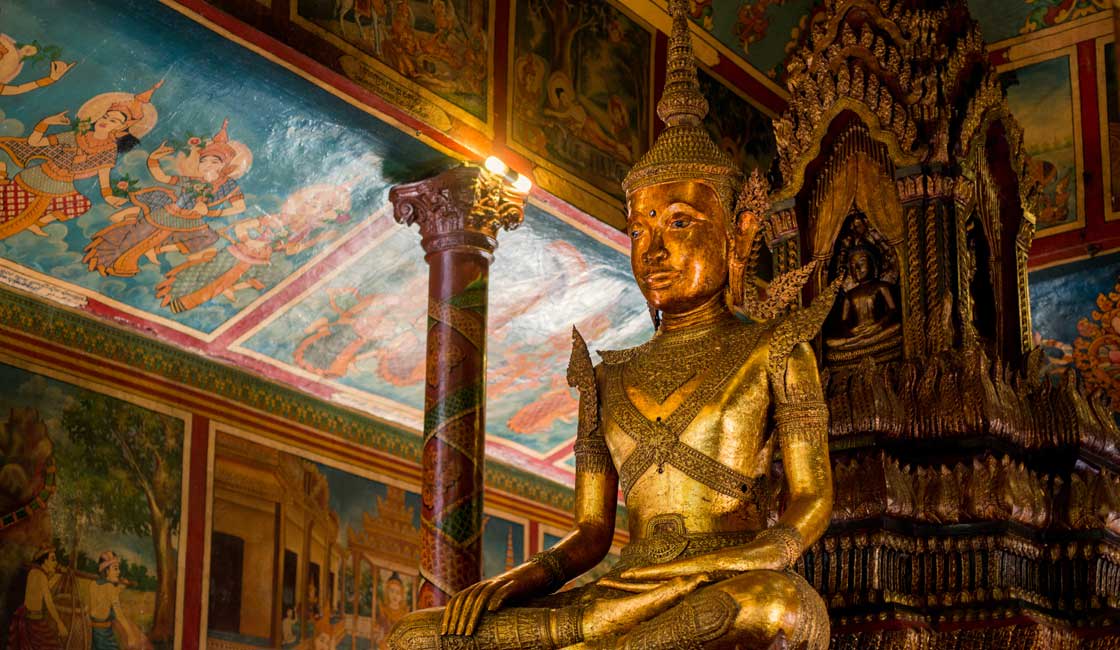
Wat Phnom interior rewards climbing the steps to it
In the heart of Phnom Penh sits Wat Phnom, a hilltop temple and peaceful haven. Wander the gardens and ascend the stairway to reach the highest point in the city. First built in the 14th century, Wat Phnom is an important symbol in Phnom Penh’s history and in fact gave the city its name.

Phnom Penh daily encounters
Escape the city clamor at Sisowath Quay. A 5 km stretch alongside the Tonle Sap River, this promenade is lined with cafes, restaurants, and bars frequented by locals and tourists alike. See life begin to stir in the early morning with outdoor aerobics, or cool down in the evening with a river cruise.
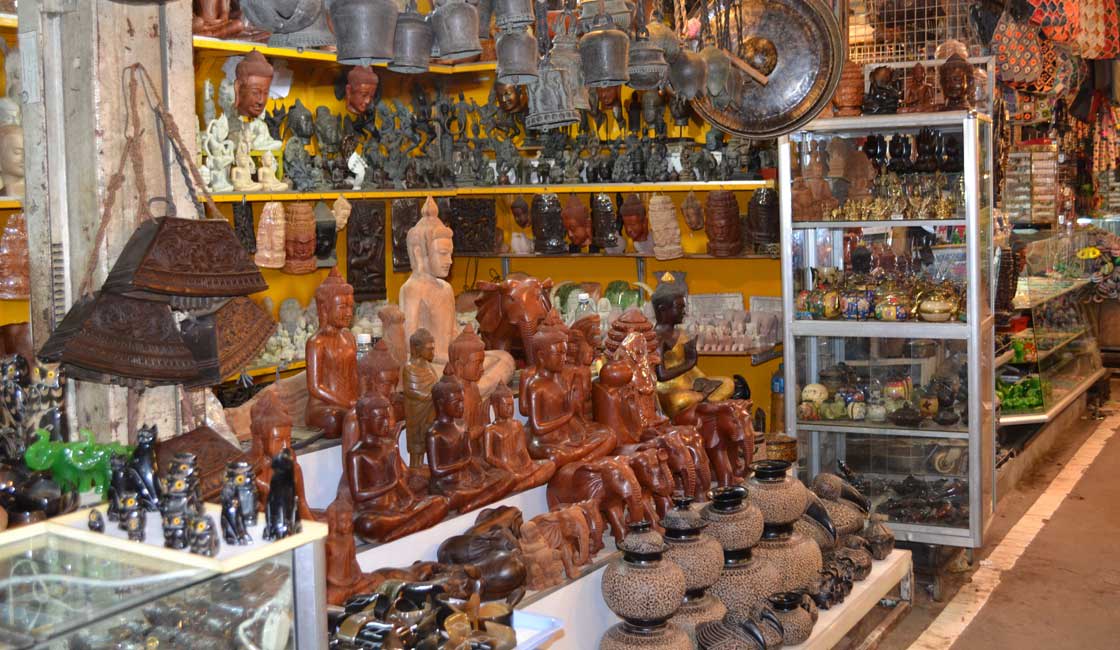
There is no trip without souvenirs shopping
Phnom Penh has several markets to browse for bargains. The Russian Market, so-named for the predominant Russian expat community which frequented this market in the 80s, sells anything and everything. Have fun haggling for Cambodian wares and get lost in the narrow, cluttered aisles. A more airy emporium is the Central Market, a spacious art deco structure in canary yellow. For live entertainment and a cool evening breeze, go to the Night Market where you can also enjoy eating street food picnic-style on patterned rugs.
For more information about Things to do in Phnom Penh, please contact us or call 1-888-215-3555.
While Rainforest Cruises aim to provide accurate and up-to-date information, we make no representations as to the accuracy or completeness of any information herein or found by following any link on this site. Rainforest Cruises cannot and will not accept responsibility for any omissions or inaccuracies, or for any consequences arising therefrom, including any losses, injuries, or damages resulting from the display or use of this information.




